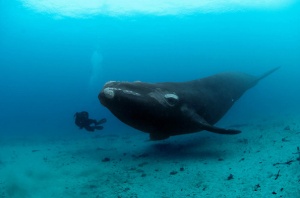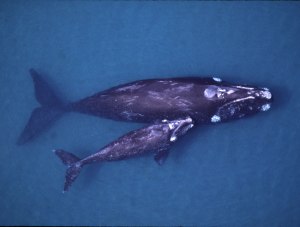 Source: Queensland Government
Source: Queensland Government
Queensland, Australia environmental researchers reported that the Bramble Cay melomys, a rodent species found on a small island in the eastern Torres Strait, appears to have been completely eradicated from its only known habitat. Also called the mosaic-tailed rat, this tiny creature marks the first mammal that has disappeared due to human-caused climate change, though experts warn it will likely be the first of many: a 2015 report noted that ⅙ of the world’s species are in danger of climate change-based extinction.
This melomys was the only mammal species native to the Great Barrier Reef, and in 1845 European sailors first noticed the rats living in high density around Bramble Cay, a small coral cay on Queensland’s north coast. The island is a significant wildlife hotspot, and remains the most important breeding ground for green turtles and several seabirds within the Torres Strait.
In 1978 the melomys population was estimated at several hundred, though they were last seen in 2009, leading to an extensive 2014 search for the creature. Since then, a report led by Ian Gynther from Queensland’s Department of Environment and Heritage Protection, in partnership with the University of Queensland, has recommended the species be labelled extinct.
As part of their search, researchers laid 150 traps on the island over six nights, and thoroughly examined the vegetation they typically inhabit for signs of life. After no evidence that any Bramble Cay melomys’ remained, the report’s authors concluded that extensive flooding due to rising sea levels was the “root cause” of the extinction, killing many animals and destroying 97% of their habitat from 2004 to 2014. Around the Torres Strait, sea levels have risen at twice the global average between 1993 and 2014. “For low-lying islands like Bramble Cay, the destructive effects of extreme water levels resulting from severe meteorological events are compounded by the impacts from anthropogenic climate change-driven sea-level rise…Significantly, this probably represents the first recorded mammalian extinction due to anthropogenic climate change,” the authors noted.
The Queensland government website suggests that attempts to restore the population are futile. “Because the Bramble Cay melomys is now confirmed to have been lost from Bramble Cay, no recovery actions for this population can be implemented,” it says. However, the report’s authors hold out hope that there might be an undiscovered population of the creatures in Papua New Guinea. They posit that several melomys may have initially arrived at Bramble Cay by floating over on debris from the Fly River region of New Guinea. Thus, the authors recommend surveying Papua New Guinea to see if the rodents or their close relatives could be living there.
Ecologist John White of Australia’s Deakin University said this extinction marks the beginning of a long battle for wildlife conservationists: “I am of absolutely no doubt we will lose species due to the increasing pressures being exerted by climate change,” he said. “Species restricted to small, low lying islands, or those with very tight environmental requirements are likely to be the first to go…Certainly, extinction and climatic change has gone hand in hand throughout the history of the world,” he said. “So, if this is one of the first, it is more than likely not going to be the last.”
 Source: CAMERON DEJONG/FLICKR/CC2.0
Source: CAMERON DEJONG/FLICKR/CC2.0
Wildlife Conservation Film Festival
Biodiversity & Wildlife Crime Conference
Christopher J. Gervais, F.R.G.S.
Founder & CEO
Christopher@WCFF.org
http://www.WCFF.org
Facebook.com/WCFForg
Twitter: @WCFF_org
Twitter: @CJGERVAIS
Instagram: @wcff_org
Vimeo.com/wcff
dailymotion.com/WCFF1
LinkedIn: Wildlife Conservation Film Festival

























 Source: Queensland Government
Source: Queensland Government Source: CAMERON DEJONG/FLICKR/CC2.0
Source: CAMERON DEJONG/FLICKR/CC2.0

